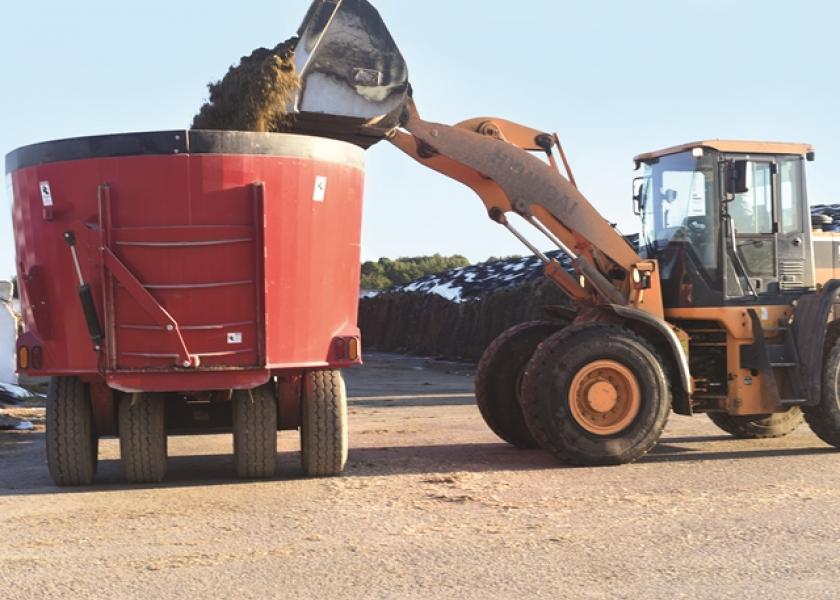Are Low Feed Costs Helping Your Profit Margin?

After years of begin disadvantaged due to high corn and soybean prices, dairies that rely on purchased feeds could finally start seeing some advantage from their chosen business strategy. However, all dairies are feeling the pinch from falling milk prices.
“While higher milk prices in November and December did help to temper losses, dairy producers were in much better financial shape when 2015 began than when it ended,” says Sarina Sharp, agricultural economist with the Daily Dairy Report. “Income deferrals and hefty bank accounts helped to mask margin pain early in the year, but today all producers must confront smaller milk checks, and there has been less opportunity to lock in higher effective milk prices through hedging.”
According to the latest Agricultural Prices report, released Monday, February 29, January’s U.S. All-Milk price dropped to $16.10/cwt., the lowest price U.S. dairy producers have received for their milk, on average, since July 2010.
At the same time milk prices are falling, though, feed costs also continue to slip—just not as fast or as far as milk revenue, notes Sharp. According to the report, corn growers received an average of $3.66/bu. of corn in January, down 4.3 cents from the 2015 average, but a penny more than in December.
Average alfalfa prices at $146/ton were much lower than in recent years. In May 2014, for example, the average alfalfa price was $224/ton. The average price for soybean meal at central Illinois elevators fell to just under $280/ton in January, the lowest monthly average since USDA began reporting the data series more than five years ago. In May 2014, for example, soybean meal prices averaged more than $519/ton.
However, not all dairies are reaping the benefits of lower feed costs. “Dairy producers with large inventories of corn silage and contracted feeds may not feel the full benefit of falling feed costs—at least not yet—and those who grow much of their own feed are feeling the pinch on the farm as well as on the dairy,” notes Sharp.
Dairy producers recouped an average of $8.10/cwt. in January after paying for feed, according to Margin Protection Program (MPP) calculations. “The 130 dairy operators who enrolled in the highest level of MPP coverage could receive an indemnity payment if February income-over-feed costs averages $7.89 or lower,” says Sharp. That would push the two-month average below the maximum $8/cwt. threshold.
“It is always important to note that national average margins on paper can differ drastically from actual on-farm finances,” says Sharp. “Officially, the MPP margin bottomed in July and improved throughout the second half of last year. The November-December pay period had the highest average margin of any two-month period in 2015, at $9.557.”
Since its inception in March 2014, the MPP margin has dipped below the maximum coverage level of $8/cwt. during four two-month periods, all in 2015 and covering the January through August time period.
The MPP replaces the Milk Income Loss Contract (MILC) program and is effective through December 31, 2018. MPP offers dairy producers catastrophic coverage, at no cost to the producer other than an annual $100 administrative fee, when the national average margin is less than $4/cwt., a level that has not been seen since the program was implemented.







